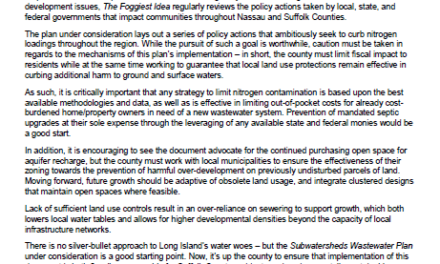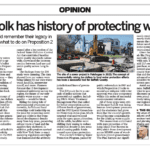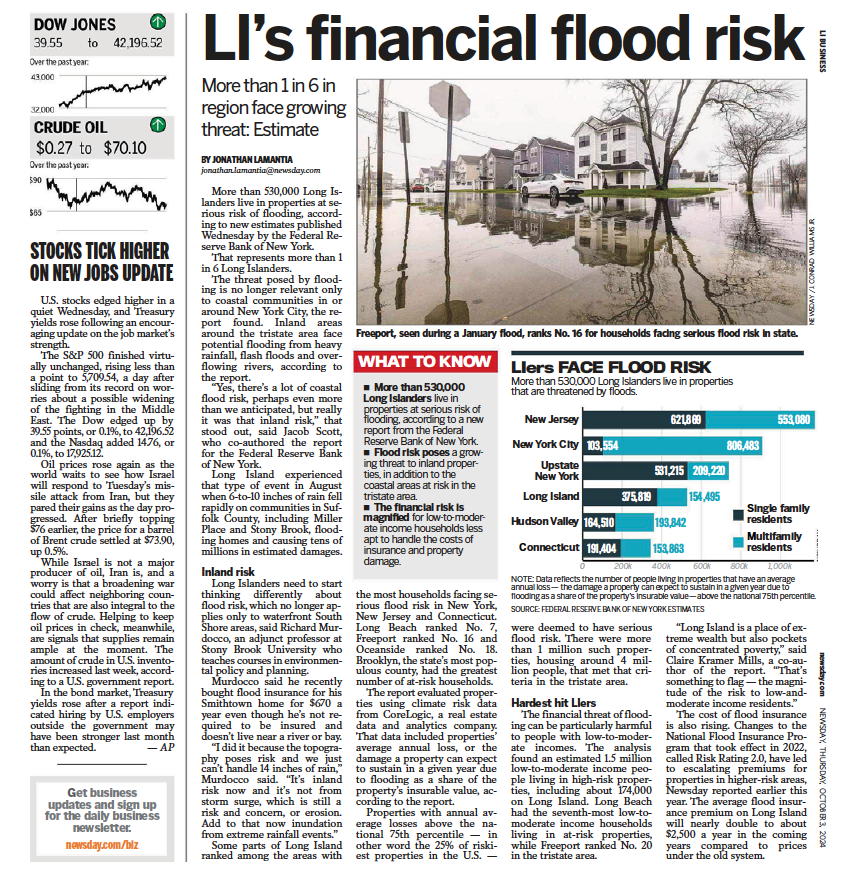The following is an excerpt from a column written by Karl Grossman, and published on May 26, 2018. The column appeared in publications across Long Island, including the Shelter Island Reporter. You can read the entire piece here.
He advanced a vision for Suffolk not welcomed by one planning expert or in online comments by a good number of readers. However, Mr. Bellone’s approach is supported by pro-development interests along with the Long Island Federation of Labor and Building Trades Council of Nassau and Suffolk Counties.
A push in recent years by Suffolk County executives for development is not new. Mr. Bellone’s predecessor, Steve Levy, a decade ago promoted a $400 million project in which an arena, hotel, restaurants, retail stores and 1,215 housing units would be built on 225 acres of county land in rural Yaphank. The scheme, dubbed “Levyland,” went nowhere. Perhaps the Ronkonkoma Hub and the adjoining major development might be dubbed “Belloneyland.”
“Getting Dense with Development Doesn’t Make Sense” was the title of an essay countering Mr. Bellone by Richard Murdocco, who studied under longtime Suffolk County Planning Director Lee Koppelman at Stony Brook University. He is on the American Planning Association’s Long Island Section Steering Committee.
As Mr. Bellone “touts his record of suburban transformation,” wrote Mr. Murdocco on his “The Foggiest Idea” blog, “Long Island continues to slowly suffocate under its own weight. It’s not surprising that the county’s chief policymaker who has prioritized economic development over sound community-driven and environmental planning efforts might be a bit too quick to take a victory lap.”
Mr. Bellone’s “new suburbia … may not be the panacea so often touted when it actually arrives. Our groundwaters are increasingly being tainted by new pollutants, and the Sound and the sea are increasingly at risk … Real estate development, when allowed recklessly, can amplify these impacts even further. In recent years, the traditional model of suburban sprawl is being replaced with merely a new variant: just higher densities and rentals shoehorned in between the existing poorly planned subdivisions and worn-out shopping centers.”
You can read the rest of the piece here.











